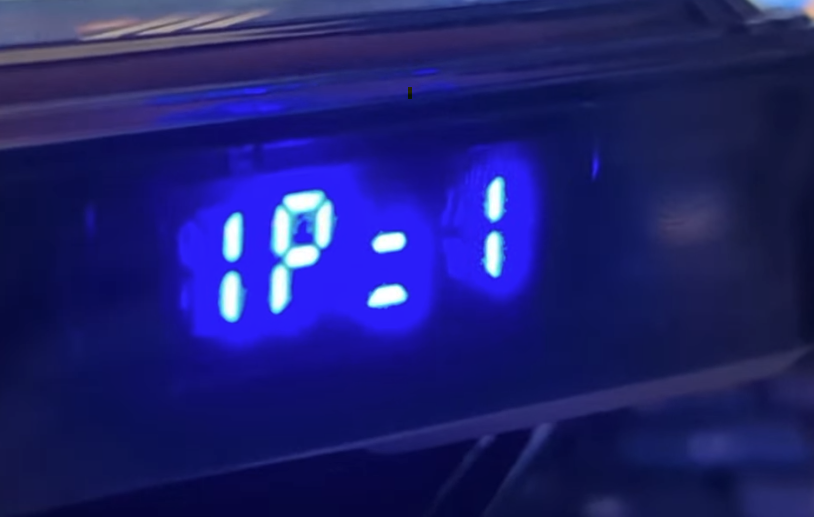All Activity
- Past hour
-

Install openVFD for LCD display on recent (6.12) kernels - Tutorial
torz77 replied to torz77's topic in Reviews / Tutorials
I can confirm that my changes have now been merged into the upstream linux_openfd repo, so I have deleted my fork. Unfortunately I am unable to edit my instructions, but hopefully it should be clear from the instructions that if my fork is unavailable, then the original repo should be used (alternatively, if a mod could edit the post to remove the reference to my fork, to make the instructions clearer, that would also be appreciated). -
Small update. The hack below seems to work as well. $ sudo systemctl edit armbian-hardware-optimize.service Add the following content between comments [Unit] Before=basic.target systemd-networkd.service netplan-wpa-wlan1.service Please note that armbian-hardware-optimize was picked at random to force anything that touches wlan1 to wait until slightly later in the boot process. No tests were done to determine at what exact point in the boot process wlan is "safe" to interact with.
-
Thanks for the reply, Tall Man. In a way, that was the point. My experience is really only with my home network use and with nvme information displayed by linux tools which seem to insist on the xnypz suffix on the root word nvme. I continued reading up on the general topic overnight and it seems that in the dtb tree world, the focus is on structuring cohesion and delaying actuating instances, so I am guessing different (more general) descriptors are used. My query was whether the precise descriptor was correct as I could see other options possible, one of which had, I think, popped up elsewhere. Since I had seen other reports of difficulties in loading systems to devices, I thought it a remote possibility that a typo had crept in. I still havent found anything definitive in my reading re the formats of the abstractions in the dt stack. I am interested in knowing about this but I as my Armbian is up and running now, and I identified the actual issue for me was a sd card error, the pressure is off . So, I hope this ramble was not too tedious and I do appreciate that you took the time to answer, and again, thanh you cheers
- Today
-
I am not sure if I am using the git command correctly to get mpv-0.3.9 with PR14690.. Please help roberto@orangepizero3:~$ mkdir mpv-official roberto@orangepizero3:~$ cd mpv-official/ roberto@orangepizero3:~/mpv-official$ git clone https://github.com/mpv-player/mpv roberto@orangepizero3:~/mpv-official$ cd mpv roberto@orangepizero3:~/mpv-official/mpv$ git checkout -b release/0.39 roberto@orangepizero3:~/mpv-official/mpv$ git fetch origin pull/14690/head:0.39 roberto@orangepizero3:~/mpv-official/mpv$ nano video/out/gpu/hwdec.c ... I don't see the added changes in the hwdec.c file
-
i've updated the image to include info on screen like IP / cpu usage / ram usage (in %) any software can write to /tmp/screen to change content you can download here
-
I thought that v4l2request was exclusively in this github project and branch: https://github.com/philipl/mpv/tree/v4l2request Which github project and branch/release are you trying? I successfully compiled and installed the mpv from https://github.com/philipl/mpv/tree/v4l2request I made the /etc/mpv.conf as per the original post Result: 50% cpu in 4 cores, about half dropped frames: I don't see any mention of hwdec=drm in the mpv log I used the libplacebo from Trixie, not compiled on my own... I can try that next. <- final update for this post: libplacebo downloaded and built by myself did not help... but now I will try mpv 0.3.9
-
I compiled mpv 0.40.0 on Debian Trixie with the patches for v4l2request, but the outcome is messy at best. There is a new hwdec v4l2request, but also two new gpu-hwdec-interop v4l2request and v4l2request-overlay. It works with acceleration when launched from a terminal, but in wayland/weston v4l2request refuses to work. I don't know what happened, but it looks like a big regression from 0.39. Better use the old mpv version IMHO.
-
@mitu I'm not sure how to use that program it only plays white noise but it comes through hdmi. I can also play wav files using aplay on command line.
-
I've recently switched my FriendlyElec NanoPC-T6 to use the Armbian Linux v6.12 server image, built on the 24th of May 2025. Booting of SD works fine, but when installing to the eMMC chip some I/O errors can be found in the kernel logs: [ 151.814773] I/O error, dev mmcblk0, sector 176 op 0x0:(READ) flags 0x80700 phys_seg 10 prio class 2 This happens when under heavy I/O load - e.g. performing an apt upgrade. I ran badblocks over the entire eMMC chip without issue - but that puts a much lower strain on the eMMC. Therefore, i'm convinced that the eMMC chip itself is fine. Poking around a bit, this seems to be because the A3A444 eMMC chip which some NanoPC-T6 SBCs shipped with do not support HS400 mode properly. There is an OpenWRT bug report about this, which fixed the issue by patching the dtsi to force HS200 mode. My kernel logs confirm that I have the A3A444 eMMC chip, and that it is currently running in HS400 mode: sudo dmesg -e | grep -i mmc [ +0.015143] mmc0: SDHCI controller on fe2e0000.mmc [fe2e0000.mmc] using ADMA [ +0.051640] dwmmc_rockchip fe2c0000.mmc: IDMAC supports 32-bit address mode. [ +0.000020] dwmmc_rockchip fe2c0000.mmc: Using internal DMA controller. [ +0.000008] dwmmc_rockchip fe2c0000.mmc: Version ID is 270a [ +0.000025] dwmmc_rockchip fe2c0000.mmc: DW MMC controller at irq 91,32 bit host data width,256 deep fifo [ +0.000210] dwmmc_rockchip fe2c0000.mmc: Got CD GPIO [ +0.012806] mmc_host mmc1: Bus speed (slot 0) = 400000Hz (slot req 400000Hz, actual 400000HZ div = 0) [ +0.007795] mmc0: new HS400 Enhanced strobe MMC card at address 0001 [ +0.000906] mmcblk0: mmc0:0001 A3A444 230 GiB [ +0.004124] mmcblk0: p1 [ +0.000720] mmcblk0boot0: mmc0:0001 A3A444 4.00 MiB [ +0.001831] mmcblk0boot1: mmc0:0001 A3A444 4.00 MiB [ +0.001742] mmcblk0rpmb: mmc0:0001 A3A444 4.00 MiB, chardev (243:0) [ +0.227497] EXT4-fs (mmcblk0p1): mounted filesystem a4f48be8-f667-4cac-a9a7-61ce8f9035d1 ro with ordered data mode. Quota mode: none. [ +0.021022] EXT4-fs (mmcblk0p1): re-mounted a4f48be8-f667-4cac-a9a7-61ce8f9035d1 r/w. I've tried to use a user device overlay to use mmc-hs200-1_8v, but this doesn't appear to work. I think this is because Device Overlays can only replace elements or add to the tree? i.e. I cannot use an overlay to remove the existing mmc-hs400-1_8v; and mmc-hs400-enhanced-strobe; entries. Is there a way to do this with a user device overlay, or will I need to try to add a similar patch to OpenWRT's one in the kernel? This is the first time i've used Armbian so i'm a little unsure about how i'd go about doing the latter. I've found a similar report of this issue from a couple of years ago by @SuperKali, albeit with no resolution. However, I can see they're now listed as one of the community maintainers for this board so i'm hoping it's OK to mention them in this thread to see if they know how best to force HS200 mode for the eMMC!
-
Type in the command: lsblk There, addressing the nvme should be obvious.
-
Hello everyone, I got a tv box: J15 pro with rk3328 inside I tried the trunk version but it failed to boot then I tried the achived 23.11.1 version, It can boot normally, but if i do a full upgrade , the box failed to boot again. I think maybe the box do not compatible with kernel 6.12 so i tried to hold the 3 packages: linux-dtb-current-rockchip64 linux-image-current-rockchip64 linux-u-boot-rk3318-box-current and then upgrade , It works what can i do to help to fix the compatible problem? ps lshw shows the box comes with a wifi chip: rtl8189es
-
Small guide for fixing Ethernet on the latest Armbian. 1. Make sure you have the correct device: cat /proc/device-tree/model → OrangePi 3 LTS 2. Decompile the dtb to dts: dtc -I dtb -O dts /boot/dtb/allwinner/sun50i-h6-orangepi-3-lts.dtb -o ./sun50i-h6-orangepi-3-lts.dts 3. Check the correct pins (yours may differ): grep -i reset-gpio sun50i-h6-orangepi-3-lts.dts | head -n 1 → reset-gpios = <0x1e 0x03 0x0e 0x01>; 4. Create the file sun50i-h6-ethernet.dts. Use the provided template and substitute your pin values. My file for example: /dts-v1/; /plugin/; / { compatible = "allwinner,sun50i-h6"; fragment@0 { target = <&emac>; __overlay__ { snps,reset-gpio = <0x1e 0x03 0x0e 0x01>; snps,reset-delays-us = <0 10000 1000000>; snps,reset-active-low; mdio { ethernet-phy@1 { reset-gpios; reset-assert-us; reset-deassert-us; }; }; }; }; }; 5. Add your overlay: armbian-add-overlay sun50i-h6-ethernet.dts 6. Reboot and enjoy working Ethernet: reboot
-
Belay that. I copied trixie to ssd and it fired up just fine without sd in slot. However, I dont yet understand nvme addressing requirements, but I can now read up on it.. so, for me, solved. Thanks
-
Coming from the future, I created a fork with a patched version of moonlight-qt that works with Armbian 25.8.1 using vendor kernel 6.1.115 and Gnome as well as the mali blob g610-g24p0-wayland-gbm and of course, rkmpp. The performance is great. In a nutshell, what I actually patched were the direct OpenGL calls since these were not directly exposed in OpenGL ES that the mali blob uses.
-

We are ready to offer a Bountysource donation to Armbian
m33ts4k0z replied to maximumsettings's topic in Orange Pi 5
I ended up creating a patched fork of moonlight-qt that works with the mali blob and rkmpp with excellent performance. -
Ok the problem is that I didn't download the correct source code: This: wget https://github.com/philipl/mpv/archive/refs/heads/v4l2request.zip Gets me a hwdec.c without the lines: extern const struct ra_hwdec_driver ra_hwdec_v4l2request; extern const struct ra_hwdec_driver ra_hwdec_v4l2request_overlay; And possibly more missing stuff New try for source download: $ git clone https://github.com/philipl/mpv.git $ cd mpv $ git checkout -b v4l2request origin/v4l2request $ nano video/out/gpu/hwdec.c <-- contains the changes for v4l2 request, then exit nano without changes $ meson setup build <-- shows the same warnings as before $ meson compile -C build ... I still get this build error Can anybody suggest, how I use these instuctions: https://gist.github.com/linguisticmind/d765a12e121bfdef2e8878b38d11b5ef But use this repo's specific branch: https://github.com/philipl/mpv/tree/v4l2request ? UPDATE: I followed the first step of https://gist.github.com/linguisticmind/d765a12e121bfdef2e8878b38d11b5ef and it installed many more dependencies than I did by myself manually. I returned to the git folder source from philipl, and tried again: Now "meson setup build" shows x11 and wayland support... all the options are enabled, except d3d11
-
Also in 25.8.2
-
Hi, SD card did not load Armbian_25.8.1_Orangepi5_trixie_current_6.12.41_xfce_desktop. I noticed that in boot.cmd line 9 , rootdev is defined as /dev/mmcblk0p1. Should that be /dev/mmcblk0n1 or /dev/mmcblk0n1p1? I note that this file should not be edited and the armbianEnv.txt only refers to rootdev=UUID=7e27c862-0a39-41cd-891e-7d77ff7968fd. Is this an error or am I off course? If so where do I correct it? cheers
-
Hi community, I am experiencing an issue reinstalling Armbian on my Helios64. I tried all methods including booting from an SD card, flashing the image onto the eMMC directly but every time I boot, I get kernel panic (flashing status light). I also can't connect to the USB via TTY to diagnose the issue. My macbook keeps detecting the /dev/tty.usbserial-DT03OEIM and the next second it is gone. I wanted to install the original Buster image but I cannot find it anymore in any of the archives. It's kind of disappointing because what's the purpose of an archive then if not hold on to an image for a few years. My current theories are limited and I can only think that the newer images might not have the correct drivers, but as I said, I can't connect via TTY to even observe the boot log. I tried pretty much everything at this point: all of the images available (devbian, ubuntu), all flavors of them (minimal, omv). Booting into U-boot, Setting P10, P11 jumpers etc, etc. Can anyone help?
- Yesterday
-
I try installing Debian Trixie using the installer by 2 differents approachs but It didn’t succeeds. 1) using a bootable USB key with ARMhf (Generic version), found on Debian web site 2) Has described in DEBIAN ARMhf installation manual, using hd-media to include the asus c100p correct .dtb (tree) files during the creation of the external USB. Regardless the method, the USB key with intaller, is not recognized, when typing CTRL+U, in developper mode. The Chromebook didn’t see the key, but it work well with Zutchi group, but not here. I only received a serie of bibs, when doing CTRL+U. I also try building an ARMBIAN image, but, Asus C100P is not available in choices, and I look in EXPERT mode, not supported, but didn’t find a generic ARMhf file having features: RK3288 processor, 4Gb of RAM, 16Gb of emmc, 2 x USB, USBc, hdmi, wifi, so I didn’t complete the process. I am open to suggestions, but my next trial is using ‘dd’ and install the ‘Velvet trixie’ image found on GitHub directly on emmc ‘drive’, if not succeed, I will try Archlinuxarm with PostmarketOS. Thanks for your comments and suggestions.
-
@Tomi Skies try the x96q images https://github.com/NickAlilovic/build/releases/tag/20250306
-
This is on minimal. So no xorg or Wayland. But I use xorg normally. I generally start with minimal and work up. I despise both Ubuntu and gnome. You won't find those on any computer I own. I compromise with xfce for the little time I might use it before I have everything set up. I've just reversed direction and installed debian xfce stable. Mostly to avoid the hassle of replacing net plan with network manager. A PIA. I can uninstall all the stuff I don't like that comes with the desktop version. Probably easier. With xfce there are two screens, but the one on the built in screen seems to be double the size it should be. I can only see half the dog. I can live with that for now. At least it uses the Fullscreen of the HDMI.








